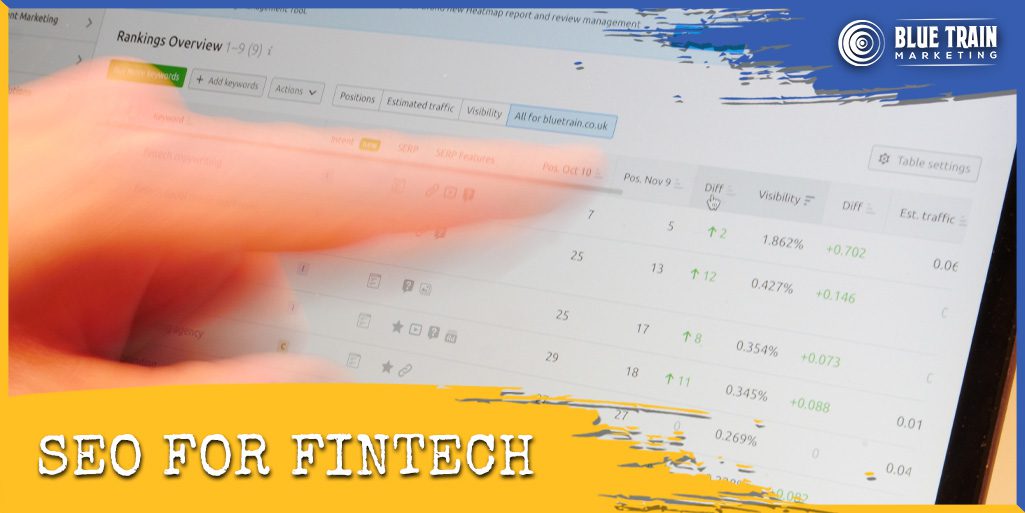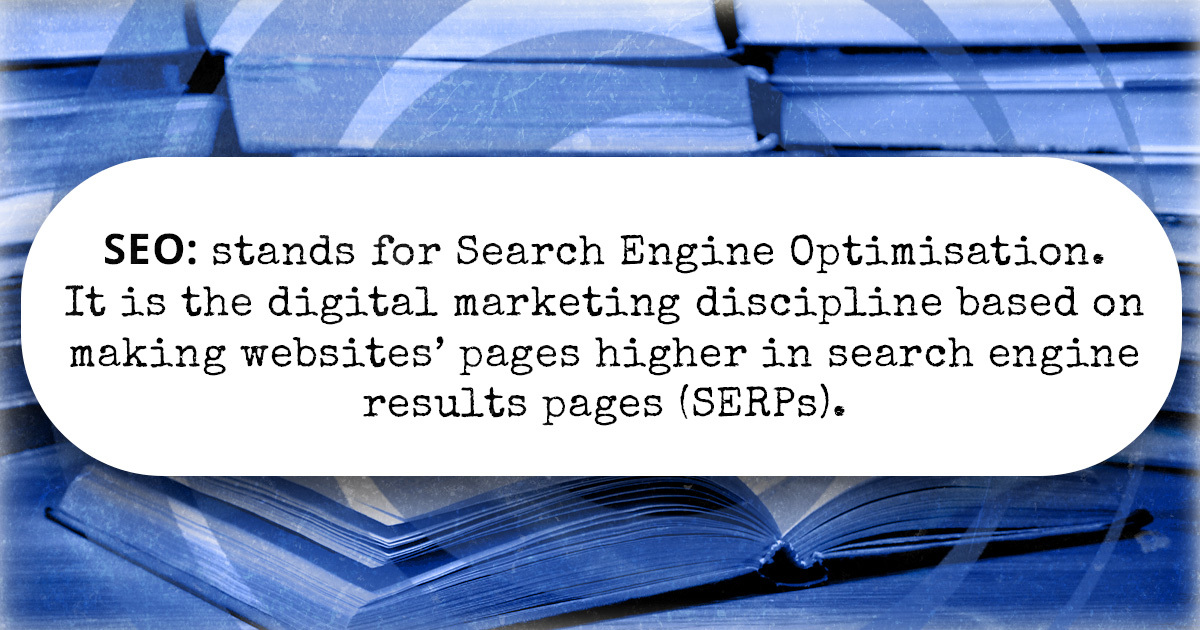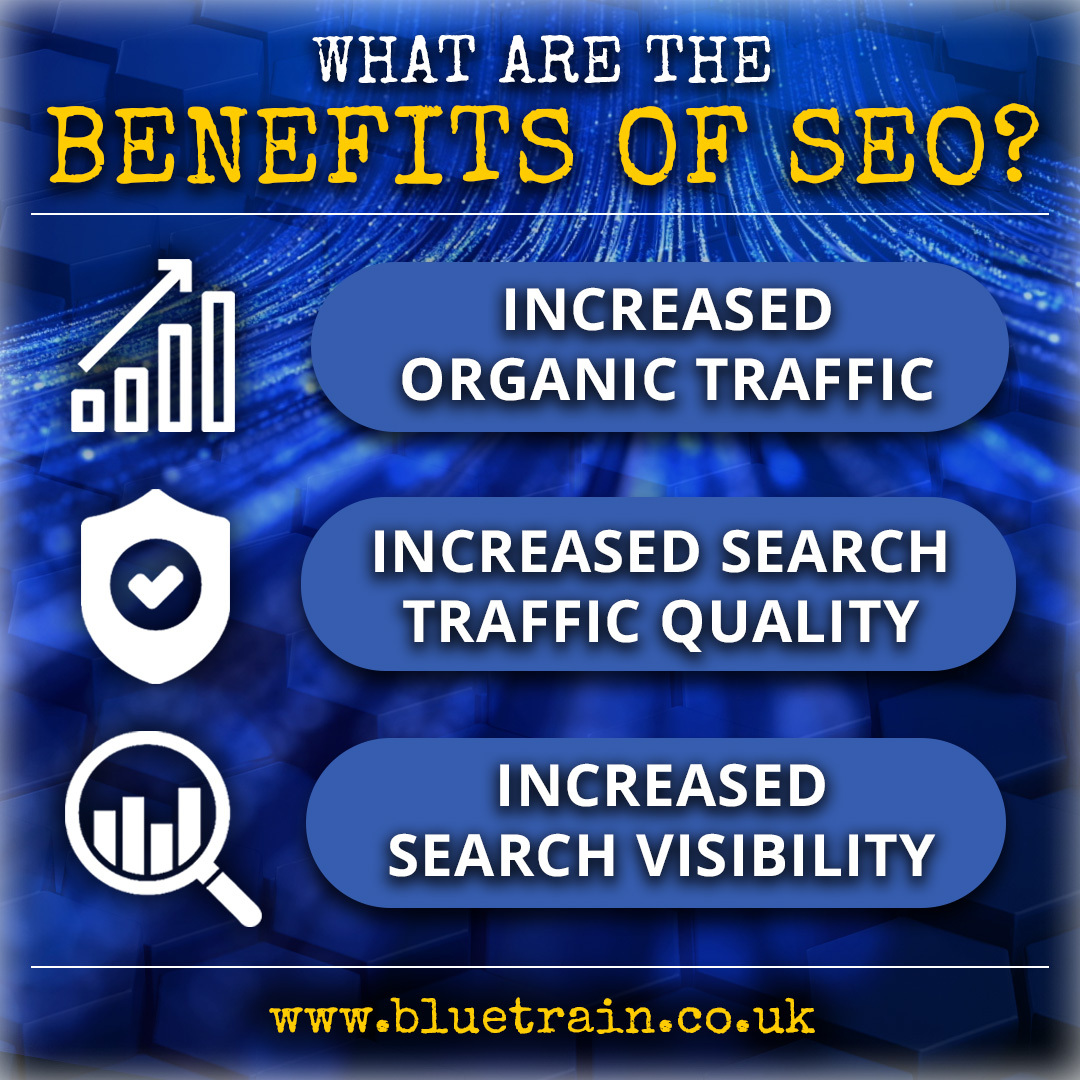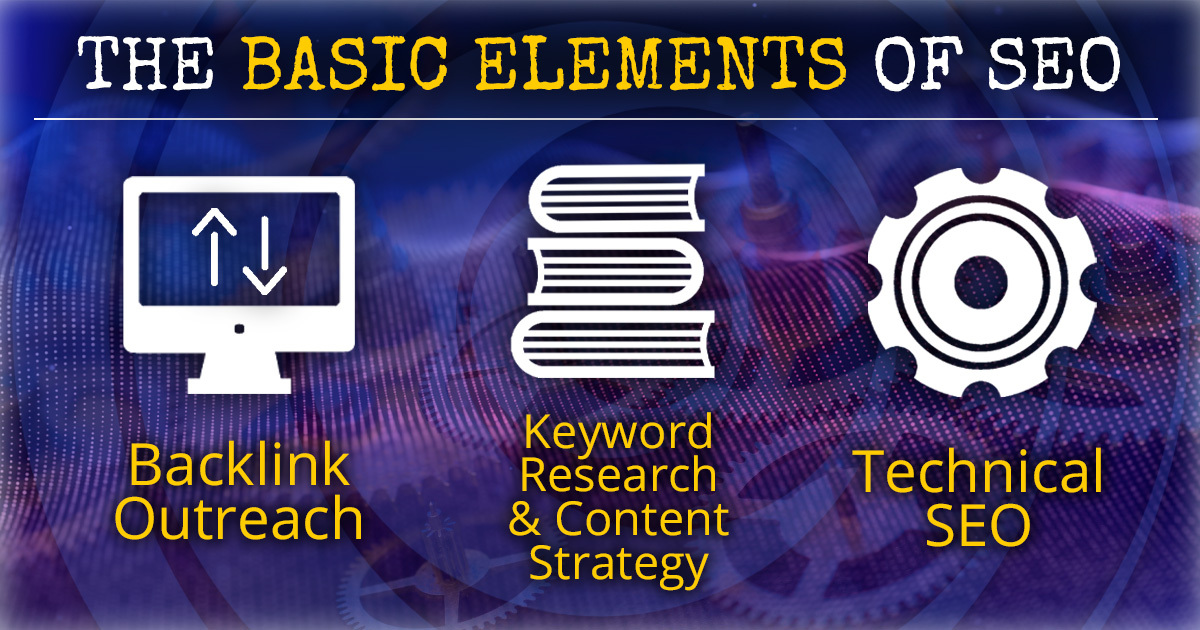
In the digital world, search engines are crucial.
This is why fintechs should focus on search engine optimisation (SEO).
One of the biggest benefits of SEO can be additional traffic to your site, which should convert to leads, if you do it right.
But SEO continues to change rapidly and it is hard to keep up with it. In our experience, many marketeers think they know what SEO is…
But unless you are currently intimately involved with SEO, the chances are that your knowledge is out of date.
It’s a field filled with its own jargon, different strategies and sometimes contradictory advice.
It overlaps with multiple areas, including marketing, website development and PR. And it can also be further subdivided into technical SEO, on-page SEO, off-page SEO, etc.
Furthermore, special considerations need to be made for different industries, including fintech.
So, let’s first take a brief look at what SEO is, why it’s important for fintechs and what is unique about SEO for fintech.

SEO stands for Search Engine Optimisation. It is the digital marketing discipline that aims to make websites’ pages rank high in search engines results pages (SERPs).
Despite sounding very technical, SEO is really part art and part science.
This is because it helps websites optimise their pages (both home/service pages and blog posts) so that they satisfy the requirements of both the search engines and user.
Optimising for search engines is important because they need to be able to crawl and understand your content in order to index it. However, they are also informed by user metrics (i.e., how users interact with content), so your content needs to please users, too.
Only one particular search engine currently matters: Google.
It has a 92% share of search engine markets worldwide. So in most cases, SEO could simply be called ‘Google optimisation‘. A far more accurate phrase!
In order to rank highly in Google for specific search terms, your website and posts need to satisfy Google’s algorithm’s requirements.
A general overview of these requirements is made clear in Google’s documentation. However, information on specific ranking factors – and exactly how important each one is – is not officially published.
If this information was available, other search engines could imitate Google. It could also be gamed easily by websites. But Google updates its algorithm hundreds of times a year, so keeping up would be exhausting…
It’s very important to understand that ultimately, Google wants to give its users the most relevant and best quality results for their searches. If they didn’t, their users would switch to other search engines.
With this principle in mind, understanding SEO becomes much more straightforward.

Although already indexed in Google, many websites effectively have little or no real SEO value.
In fact, according to one study, 90.63% of content gets no traffic from Google.
According to one study, results that rank first get approximately 31% of a given keyword’s total traffic. Results that rank second, 24%; and those that are third, 18%. Results on the second page get less than a single percent.
The harsh truth is that you are not likely to win and additional traffic unless you rank on the first page of the Google results.
But not having good SEO doesn’t mean they aren’t already getting traffic to their websites (see below ‘1. Increased organic search traffic’).
In this sense, many websites still serve a basic and important function as digital shop front for existing customers to visit.
So, what are the actual benefits of SEO?
Organic search traffic is essentially traffic that arrives on your website via a Google search.
It is easy to distinguish organic from paid traffic (PPC), but not always from direct traffic. This is traffic that doesn’t have attributable sources, such as if a visitor arrives directly at your site via a link on another website.
Many website visits come from users typing company names into Google rather than URLs – i.e., direct traffic that – at first glance – looks like organic traffic.
This is usually someone looking for the site of a business they already know. When someone searches for the name of a specific company, it’s called a ‘branded keyword’.
From a 30,000-foot view, increased organic traffic is perhaps the primary benefit of SEO.
The quality of organic search traffic can be as important as the quantity.
For example, the term ‘card manufacturers’ has approximately 2,900 global searches each month. Raking in the top three for this could bring in a large volume of organic search traffic.
But that traffic is likely to be made up of consumers or businesses searching for greetings card manufacturers. In other words, it would be useless to a fintech providing debit or credit card manufacturing services.
A big part of SEO strategy therefore includes understanding the search intent of specific terms. Once this has been determined, fintechs can target keywords that will bring high-quality, relevant traffic.
Search visibility is the amount of traffic a website gets for its ranking keywords.
A good SEO strategy will seek to achieve higher search visibility across multiple relevant search terms.
For example, if 31% of users that search a specific keyword then click on your top-ranking result, it means you have a search visibility of 31% for that keyword.
Once you average out the percentage share of clicks you get for all of your target keywords, you will have a broader search visibility metric.
This means potential customers that have never heard of your fintech business have a higher chance of finding you rather your competitors – which is the prize for most of our fintech clients.
This will also lead to your site having higher perceived authority because of your domain’s omnipresence in search results.
Let’s create a fictitious domain to illustrate these benefits.
Imagine a new retailer is looking for payments processing services.
At first, their enquiries are very general: ‘What are payment processing service?’, ‘How does payment processing work?’, etc.
Later on, they are likely to become more specific: ‘How to set up credit card payment processing’ or ‘retail payment acceptance example’, etc.
Time and time again, the domain of Blue Payments Ltd. appears in their search results with high-quality content that answers their questions.
When they are finally ready to purchase their first retail payment system, Blue Payments Ltd.’s site appears in the results for a more directly commercial keyword, ‘retail card payment acceptance service’.
Naturally, they are now familiar with the name Blue Payments Ltd. and are happy to submit their contact details.
In summary, the domain of Blue Payments Ltd. gets relatively high organic search volume for its industry because it has so many high-ranking, and high-quality keywords. Therefore, it is highly visible for relevant terms searched by its potential customers.
(See below ‘Why should fintech companies care about SEO?’ for more on this example.)

SEO can be roughly divided into the following three categories:
Technical SEO covers a range of aspects related to your website’s ‘crawl-ability’ (i.e., how easily Google’s bots can ‘crawl’ and understand it) and speed.
Special SEO software can help you crawl your website and reveal any technical issues.
The most well-known SEO software is Ahrefs and Semrush. Once you have set up a paid account, they offer good site audit tools. There are also more specialist technical audit-focused tools such as Screaming Frog and Sitebulb.
Every site has different technical issues and there are too many to list here. But common ones include broken links, slow-loading pages, missing page titles, etc.
Technical SEO involves fixing or improving these issues so that your site is easier for both Google and users to access.
‘Keywords‘ are basically search terms. They can be words, phrases or questions (often referred to as ‘long-tail keywords’).
Keyword research is a process that involves using SEO software to estimate metrics around different keywords variations.
There are three main metrics to consider:
Semrush has a useful intent category for keywords. Or you can simply Google keywords and see whether the results are mostly blogs or home/service pages.
There are two basic areas where keywords should be considered:
Articles or blogs written for SEO are created for a very different purpose and are not used by your marketing department in the same way. SEO content is carefully and explicitly structured to rank for specific keywords.
Unlike marketing or thought leadership pieces, SEO content is usually not heavily promoted as it is designed to gradually gain readers as it rises through the Google rankings.
Your SEO articles should be planned and structured specifically to outperform the current highest-ranking content.
This involves researching the content items in the first or second position, analysing the key elements and creating a new piece that offers additional value to readers.
‘Backlinks‘ are links to your website from another site. The ideal backlink should have one or more of the following properties:
In an ideal world, creating great content would naturally lead to others linking to it.
However, in reality there are multiple ways to gain or increase the likelihood of gaining backlinks.
Firstly, certain types of content are more likely to gain backlinks, such as infographics or data-rich studies.
There are also other tactics based on outreach to domains. This could include tactics such as offering to write a guest post for another site in exchange for a mention and backlink to you.
You can use SEO software to see the backlinks your competitors have achieved. From here, you can organise the data into category lists (backlinks from guest posts, mentions in articles, profile pages, etc.), sort them by domain authority, and then outreach to those sites via email.
Although this can be time-consuming, gaining backlinks is still a huge part of a successful SEO strategy.
Now we’ve provided an overview of SEO, let’s look more closely at the hows and whys of SEO for fintech.
There are currently nearly 9 billion searches made on Google each day.
Whether in business-to-business (B2B) or business-to-customer (B2C), fintech customers are online. They find products via the web and app store rather than physical stores.
Below are two benefits that fintechs can expect from good SEO.
Thanks to SEO platforms and software, we can estimate how many searches are being made on Google (and other search engines) for specific products.
Take our Blue Payments Ltd. example above. The keywords for the content mentioned there have the following monthly traffic values:
There is a combined traffic of 1530 searches a month.
If Blue Payments Ltd. ranked first for all of these terms, it could expect to get approximately 31% share of this (474). If ranking second, approximately 24% (367). Third, 18% (275).
This is highly qualified traffic. It is also extremely efficient: once the content is ranking, most of the work has been done.
Month after month this qualified traffic will continue to arrive at your site.
You’ll simply occasionally need to update your SEO content to keep it high in the rankings.
Fintech is a digital industry. A big part of its appeal is its differentiation from traditional financial services and banking.
Social media, PPC and video SEO (different from traditional SEO we discussed previously) are all useful channels for brand exposure and product education to this growing market.
However, no digital marketing strategy is complete if it excludes Google.
Besides generating organic traffic, being an authority and online presence that appears when users google industry questions will establish your expertise in a valuable way.

SEO for fintech is SEO work undertaken by SEO specialists that also understand fintech.
As mentioned earlier, ultimately Google’s algorithm has one primary goal: to give its users the most relevant and best quality results for their searches.
Therefore, to deliver these results, understanding the fintech market and how your solution meets the needs of a consumer or B2B audience is vital.
“To complicate is simple, to simplify is complicated…” an artist once said.
Content that ranks will sink or swim based on user metrics. Google will know how long visitors stay on your page, their next action is (i.e., do they leave and go back to the same results and click on another result?), etc.
Therefore, you need to keep visitors on your site with good, clear, engaging words and imagery that meets search intent.
Without a good knowledge of fintech marketing, you might find your SEO efforts result in content including keywords in an unsophisticated way. This will disrupt user experience and lead to high bounce rates.
The other important consideration regarding fintech marketing relates to budgets. Fintechs don’t tend to have a large amount of cash available for long-term paid ad spend (PPC).
This makes developing an SEO strategy a vital marketing activity as it is likely to be a lower-cost, long-term strategy.
Knowing a product or service well is important. So too is knowing your audience.
Fintech is a complex industry spanning consumer and B2B offerings from back-office technology providers, issuers, acquirers and a plethora of supporting services.
It’s important to keep in mind the multitude of interdependencies and perspectives that need to be evaluated when planning how you sell your services within the ecosystem.
In fintech, the nature of job roles can be less formally defined than other industries.
This needs to be kept in mind when planning your fintech SEO strategy and content, especially in the start-up space. You might, for example, encounter a CFO who is also head of marketing which would affect the orientation of your content.
Although fintech is firmly rooted in user experience and customer convenience, it can ironically be quite difficult for buyers to find what they need in this complex ecosystem.
Many fintechs are surprised to learn that people are not searching for their services using the expected terms.
The development of every SEO strategy should include a brainstorm of every search term your team can think of. But be prepared to discover that your customers may think differently.
Breaking through to the mass market is tough for both consumer and B2B fintechs. While paid advertising is a sure-fire tactic for quick results, it can be very expensive, especially in the early days of market entry.
Investing what can be a fraction of the cost in developing a solid SEO strategy is likely to be a wise decision with long-term benefits.







Log in to access complimentary passes or discounts and access exclusive content as part of your membership. An auto-login link will be sent directly to your email.
We use an auto-login link to ensure optimum security for your members hub. Simply enter your professional work e-mail address into the input area and you’ll receive a link to directly access your account.
Instead of using passwords, we e-mail you a link to log in to the site. This allows us to automatically verify you and apply member benefits based on your e-mail domain name.
Please click the button below which relates to the issue you’re having.
Sometimes our e-mails end up in spam. Make sure to check your spam folder for e-mails from The Payments Association
Most modern e-mail clients now separate e-mails into different tabs. For example, Outlook has an “Other” tab, and Gmail has tabs for different types of e-mails, such as promotional.
For security reasons the link will expire after 60 minutes. Try submitting the login form again and wait a few seconds for the e-mail to arrive.
The link will only work one time – once it’s been clicked, the link won’t log you in again. Instead, you’ll need to go back to the login screen and generate a new link.
Make sure you’re clicking the link on the most recent e-mail that’s been sent to you. We recommend deleting the e-mail once you’ve clicked the link.
Some security systems will automatically click on links in e-mails to check for phishing, malware, viruses and other malicious threats. If these have been clicked, it won’t work when you try to click on the link.
For security reasons, e-mail address changes can only be complete by your Member Engagement Manager. Please contact the team directly for further help.